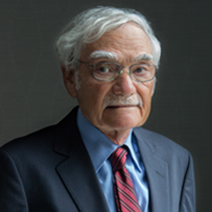Auqui v. Seven Thirty One Limited Partnership: The Latest on Workers’ Compensation Decisions and their Preclusive Effect in State Courts
By: Robert P. Valletti, Esq.
The effect of Workers’ Compensation decisions on third-party litigation is a commonly-visited topic, often in the realm of the preclusive effect a WCB (Workers Compensation Board) decision has on the state court cast. The doctrine of “collateral estoppel,” also known as “issue preclusion,” prevents a party from litigating an issue in a subsequent proceeding because the issue has been previously determined in a prior proceeding; the theory behind this doctrine lies in the fact that allowing re-argument of the issue would be an abuse of judicial resources and potentially cause prejudice to a party.
Typically, collateral estoppel is applicable to determinations of a “quasi-judicial” administrative agency like the Workers Comp Board. If an identical issue was necessarily decided in a prior action at a time when the party litigating the issue had a full and fair opportunity to contest it, collateral estoppel will disallow its re-argument. Importantly, however, legal conclusions and conclusions of mixed law and fact are not given preclusive effect, while pure findings of fact are.
The New York Court of Appeals recently decided the case of Auqui v. Seven Thirty One Limited Partnership which specifically spoke to the issue of the preclusive effect given to Workers Comp Board decisions. In Auqui, the plaintiff was injured when a sheet of plywood fell off a building owned by the defendant. The plaintiff was compensated for treatment of his head, neck and back injuries as well as PTSD and depression. The WCB subsequently determined the plaintiff was no longer disabled, did not need any more treatment and terminated his benefits accordingly.
The Auqui defendants then moved, in the Supreme Court where the plaintiff’s personal injury matter was pending, to collaterally estop the plaintiff from re-litigating the duration of his work-related injury on the grounds that the issue was already fully litigated and decided by in the WC proceeding.
The Court of Appeals held that the WC decision should be given a preclusive effect because the WCB decided he was no longer disabled and that this determination was purely a question of fact (thus entitling the finding to preclusive effect). The Court of Appeals also determined that the plaintiff had a full and fair opportunity to litigate the issue, i.e. he was represented by counsel, submitted medical reports, presented expert testimony, and cross-examined the defendants’ experts regarding the issue of whether or not there was an ongoing disability.
The dissent, authored by Justice Pigott, felt that the determination of whether the plaintiff had an ongoing physical or psychological disability (and, relatedly, his ability to return to work) is an ultimate decision and should not be given preclusive effect. The dissent also notes that this determination is ultimately a mixed question of law and fact: “the WCB had to reach a conclusion based on both questions of fact, such as whether [the plaintiff] had a particular injury to the brain or body, and a question of law, namely whether the facts amounted to a disability preventing [the plaintiff] from returning to work.”
This decision sheds light on why it is important for third-party practitioners to know what is going on in the accompanying workers’ compensation cases associated with their clients. Despite the nature of workers compensation trials being briefer and the practice being volume-based with less time devoted to each individual case, the rulings of the judges therein are still rulings with weight; such rulings regularly affect the landscape of the associated third party cases and may even preclude argument on important legal issues in the state Supreme Courts so long as the requirements for collateral estoppel are met.













